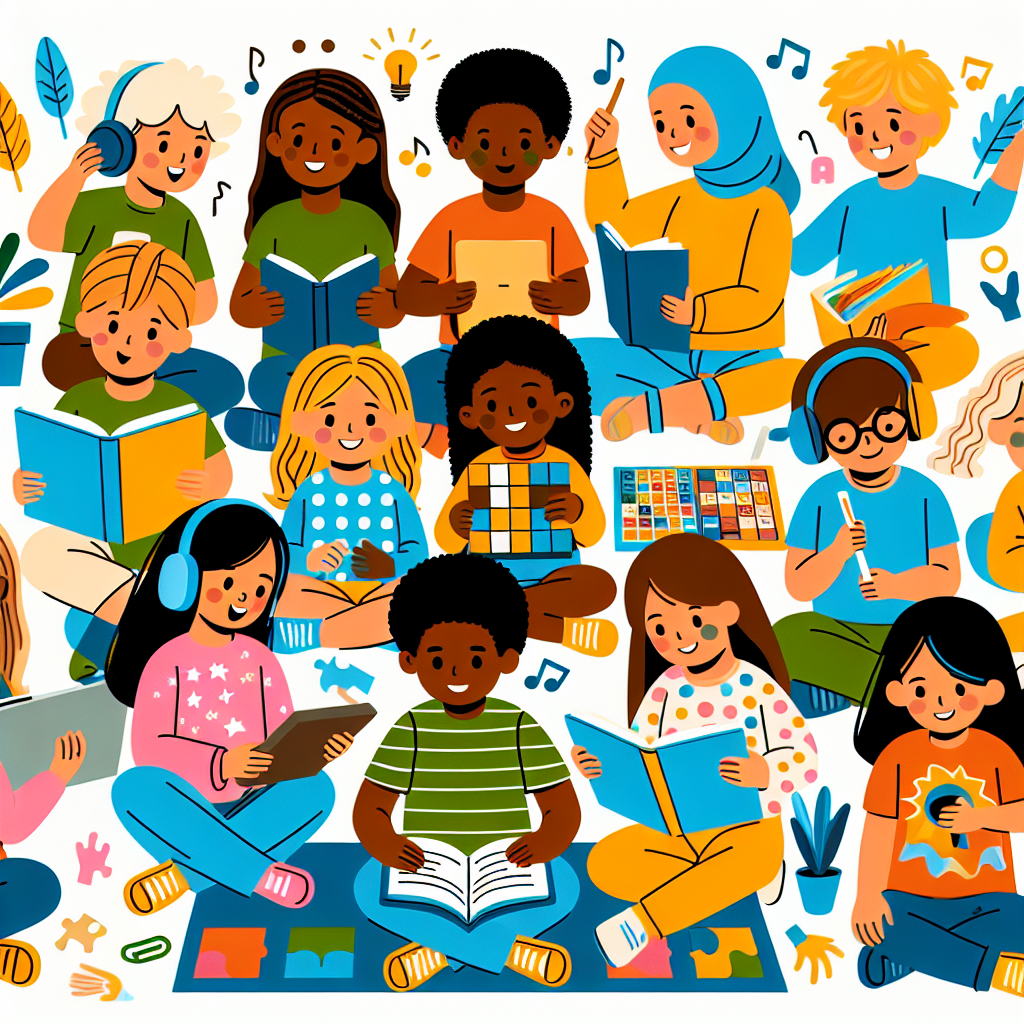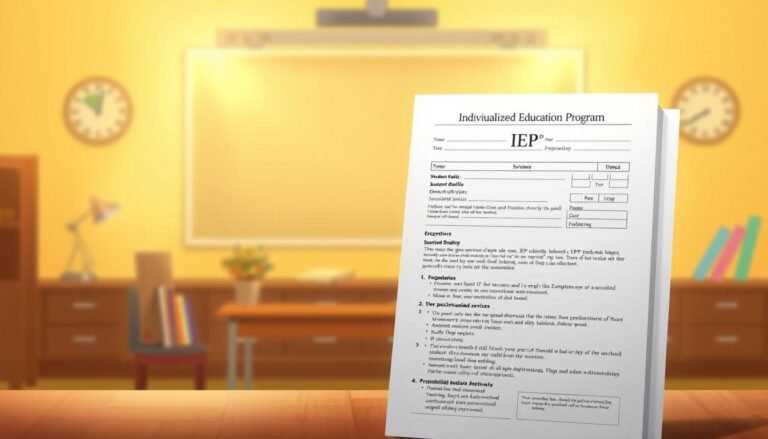
Empowering Voices: Essential Strategies for Supporting Children with Learning Disabilities and Speech Challenges
Introduction
In a world that thrives on communication, the ability to express thoughts, feelings, and ideas is invaluable. However, for many children, obstacles in learning and speech can create barriers that may stifle their voices and potential. Empowering Voices: Strategies for Supporting Children with Learning Disabilities and Speech Challenges is not just a phrase—it’s a call to action for educators, parents, and communities. Through guidance and interventions, we can create an environment that nurtures each child’s unique way of expressing themselves. In this article, we will explore in-depth strategies that can empower these voices, transforming challenges into triumphs.
Understanding Learning Disabilities and Speech Challenges
Defining Learning Disabilities
Learning disabilities (LD) encompass a range of neurological disorders affecting the brain’s ability to receive, process, and respond to information. This can manifest in various ways, including difficulties with reading, writing, math, or problem-solving. According to the National Center for Learning Disabilities, about one in five children experiences learning disabilities, making it crucial for us to understand their unique needs.
Recognizing Speech Challenges
Speech challenges may include articulation disorders, apraxia, stuttering, and language delays, affecting a child’s ability to communicate effectively. Nearly 5% to 10% of children face some form of speech or language impairment, per the American Speech-Language-Hearing Association (ASHA). These challenges can impact not only academic performance but also social interactions and self-esteem.
The Intersection of Learning Disabilities and Speech Challenges
It’s important to recognize that learning disabilities and speech challenges can coexist. For instance, a child with dyslexia may also struggle with verbal expression, making their educational journey even more complicated. Understanding this intersection is crucial for implementing effective support strategies.
Creating a Supportive Learning Environment
Foster Open Communication
An open dialogue between educators, parents, and children plays a vital role in fostering an encouraging learning environment. Here are key strategies to ensure effective communication:
| Strategy | Description |
|---|---|
| Regular Check-Ins | Schedule consistent meetings to discuss progress and areas of concern. |
| Encourage Self-Expression | Allow children to voice their thoughts and feelings without judgment. |
| Create Safe Spaces | Designate areas where students feel comfortable expressing themselves. |
Individualized Education Plans (IEPs)
One of the most essential elements within the framework of supporting children with learning disabilities and speech challenges is the Individualized Education Plan (IEP). Tailored to each child’s specific needs, the IEP sets goals and outlines the resources needed for effective learning. Collaboration between parents, special educators, and therapists can empower students to transcend their challenges.
Teaching Strategies for Learning Disabilities
Multisensory Learning
Multisensory approach involves engaging more than one sense at a time. This method can significantly enhance learning experiences for children with disabilities:
- Visual Aids: Use charts, images, and videos to reinforce lessons.
- Kinesthetic Activities: Incorporate hands-on tasks, such as building models or using manipulatives in math.
- Auditory Elements: Employ music or storytelling to enrich learning for auditory learners.
Case Study: A Multisensory Approach in Action
In a second-grade classroom, a teacher named Ms. Jacobs struggled with a student named Aaron, who had dyslexia and speech delays. By integrating multisensory techniques—like using colored blocks to illustrate words and songs to support phonetic skills—Aaron’s reading level improved significantly over the year. This case exemplifies the practicality of implementing diverse teaching methods to support students with learning disabilities and speech challenges.
Use of Technology
Technology can be a powerful ally in supporting children with disabilities. Tools like text-to-speech software, speech recognition apps, and interactive learning platforms provide unique opportunities for engagement.
| Technology | Application |
|---|---|
| Assistive Communication Devices | Support children in expressing their thoughts effectively. |
| Educational Software | Offer tailored activities to cater to individual learning needs. |
Case Study: Going Digital for Success
A school in Ohio adopted tablet-based learning for students with various learning disabilities, including speech challenges. The integration of educational applications led to a noticeable increase in engagement and comprehension. The adaptive nature of technology allowed each child to learn at their own pace, showcasing the power of Empowering Voices: Strategies for Supporting Children with Learning Disabilities and Speech Challenges through innovative tools.
Strategies for Enhancing Speech Skills
Speech Therapy Interventions
Professional speech-language therapy can provide children with targeted strategies to improve communication skills. Key components of effective therapy may involve:
- Articulation Exercises: Focused practice on sounds relevant to each child’s individual challenges.
- Language Development Activities: Engaging in conversations, storytelling, and play to enhance vocabulary and syntax.
Case Study: Transforming Communication
Elena was a seven-year-old girl who struggled with stuttering. Through individual speech therapy, she learned various techniques to manage her speech fluency. With parental involvement and consistent practice at home, Elena began to participate more in class, illustrating that targeted speech strategies can significantly empower a child’s voice.
Peer Support Programs
Peer support can provide a non-threatening environment for children to practice their communication skills. Training peers to assist classmates with disabilities fosters a culture of empathy and understanding:
- Buddy Systems: Pairing students can help practice speech in a low-pressure setting.
- Group Activities: Small group discussions and presentations can empower children to express themselves with confidence.
Promoting Social Skills
Building social skills not only helps in speech but also encourages healthier interactions among peers. Teaching children how to engage in dialogues and express themselves can be beneficial:
| Skill | Learning Activity |
|---|---|
| Active Listening | Role-playing conversations to focus on listening skills. |
| Assertiveness Skills | Games that promote expressing feelings and opinions. |
Involving Parents and Caregivers
Parent Education
Educating parents on the nature of their child’s learning difficulty is critical. Workshops or resources focusing on ways to create a supportive home environment can have lasting impacts. Key topics might include:
- Understanding the learning process in children.
- Strategies for practice at home.
- Identifying resources or additional therapies.
Building Collaborative Relationships
Encouraging collaborative relationships between families and schools enhances the support network around a child. Regular communication—whether through newsletters, meetings, or digital platforms—ensures everyone is on the same page.
Creating Inclusive Communities
Encouraging Awareness and Understanding
Community involvement plays a key role in supporting children with learning disabilities and speech challenges. Awareness programs can educate the public about these challenges and promote inclusivity in local activities.
Case Study: Community Awareness Initiative
A local community center initiated an awareness campaign that partnered with schools to create workshops on understanding learning disabilities. The initiative not only educated families but also helped change attitudes toward children with challenges, demonstrating the positive impact of an informed community.
Supporting Extracurricular Activities
Encourage children with disabilities to participate in sports, arts, and other extracurricular activities. Finding an outlet for self-expression can build confidence and improve social skills.
Conclusion
Empowering Voices: Strategies for Supporting Children with Learning Disabilities and Speech Challenges is more than an educational endeavor—it’s a societal responsibility. By collaborating effectively across various domains—education, healthcare, and community—we can ensure that every child has the opportunity and tools to express their voices freely and confidently. Remember, each small step taken toward understanding and support leads to a large leap for a child’s self-advocacy and growth.
FAQs
What are the signs of learning disabilities?
Signs include difficulty in reading, writing, math, inconsistent academic performance, and problems with memory or attention.When should I seek help for my child’s speech challenges?
Early intervention is key. If your child shows persistent difficulty with speech, it’s recommended to consult a speech-language pathologist.How can I support my child at home?
Engage in daily reading, emphasizing communication during play, and incorporating learning activities into routines.Are there specific resources for parents?
National and local organizations often provide resources, support groups, and educational materials tailored for families.Can technology really help my child?
Yes! Various educational technologies can cater to different learning styles, making concepts more engaging and accessible.- How can schools create a more inclusive environment?
Schools can implement tailored educational plans, provide training for staff, and cultivate partnerships with parents and specialists.
In fostering a seamless collaboration and support network, we can truly empower the voices of children with learning disabilities and speech challenges, ensuring that their unique perspectives shine brightly in our society.
















